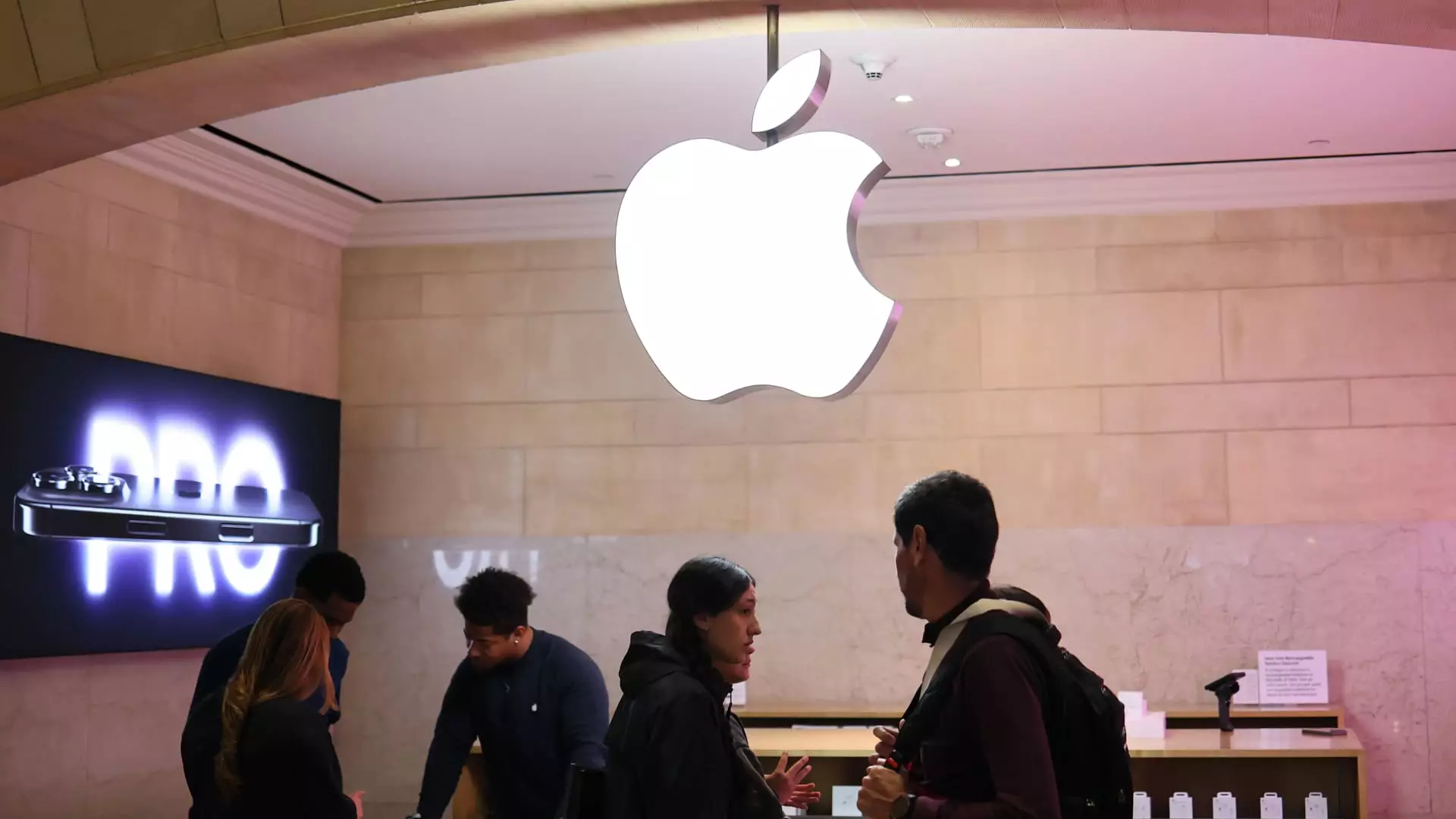In a landscape where titans of industry and government clash, the fragile balance of global supply chains becomes starkly apparent. For companies like Apple, which thrive on seamless operations across borders, the latest surge in reciprocal tariffs is not just a financial concern; it poses an existential threat. As the Trump administration paused many of its tariffs for 90 days, Apple’s position remained precarious. Heavily reliant on Chinese manufacturing, the company finds itself at the mercy of compounded tariffs reaching an astronomical 145%—a financial burden that could reshape the iPhone business model indefinitely.
Dan Ives, a respected voice in technology research, aptly described the situation as having “their boat flipped over in the ocean with no life rafts.” This metaphor underscores a fundamental truth: Apple’s supremacy in the market could erode substantially if current tariffs remain in place or escalate further. This isn’t simply a matter of increased costs; it’s about survival in an oil-and-water world of geopolitics and corporate strategy, where timing and location often dictate fortune.
The Supply Chain Quagmire
Despite years of attempts to diversify supply chains beyond China, Apple continues to grapple with its dependency on Chinese production. Data reveals that nearly 80% of the 77 million iPhones shipped to the U.S. in the previous year originated from China, a statistic that lays bare the immense challenge facing the tech giant. With emerging voices in the tech-and-trade arena insisting on shifting production to nations like India, the question remains: Can such a transformation take place swiftly enough to save Apple from potentially drastic price increases?
Undoubtedly, the ongoing trade tension fosters uncertainty, as research suggests that Apple may need to raise U.S. prices by up to 85% to maintain margins. Le Xuan Chiew from Omdia outlined the dire implications of this predicament, suggesting that while the initial tariffs may have been bearable, heights like 145% create an untenable financial scenario for Apple. As U.S. consumers brace for these impacts, demand for iPhones may temporarily surmount supply, further complicating Apple’s capacity to navigate the situation.
Stockpile as a Temporary Solution
In light of escalating tariffs, another potential remedy exists: stockpiling. Reports cite that Apple shifted substantial quantities of iPhones from India to the U.S. before the latest tariffs even took effect. However, leaked speculation reveals that the effectiveness of this stockpiling may diminish rapidly, especially as consumer anticipation builds around price hikes. While temporarily cushioning the blow, stockpiles operate only as a stopgap measure—one that is fundamentally unsustainable in the long term.
The logistics of shipping iPhone components exclusively from India present their own set of challenges; Apple cannot afford significant supply interruptions, nor can it rely purely on tariffs to dictate production strategy. There lies a needle to thread—tangible risks of geopolitical fallout must be mitigated while still fostering robust production capabilities in emerging markets.
Appling for Tariff Exemptions: A Mixed Strategy
In response to this tumultuous climate, many experts are advocating for Apple to actively pursue tariff exemptions from the Trump administration, a strategy reminiscent of their approach during the last presidential term. Daniel Newman, CEO of The Futurum Group, expressed cautious optimism around potential concessions, emphasizing Apple’s hefty $500 billion investment in the U.S. and the prospect of job creation. This approach hints at a willingness from Washington to consider the broader implications for American jobs and the economy, should Apple manage to maintain its foothold in the U.S. marketplace.
However, the lingering question is whether such concessions will be sufficient to stave off damage to Apple’s brand equity and market share. Predicting a scenario where iPhones cost $3,500 if manufactured domestically seems alarmist, yet it embodies the dread that many hold regarding ambitious plans to elevate U.S.-based manufacturing without significant policy support.
Uncertain Future: Negotiations and Tariff Risks
While many analysts speculate that a thaw may be on the horizon, such optimism fails to account for the visible volatility in world politics. The conundrum facing Apple mirrors larger economic tensions between the U.S. and China, a complex interplay that inevitably entangles all enterprises reliant on these two economies. “Even in a world where tariffs may lower,” warns Craig Moffett, co-founder of MoffettNathanson, “the question of how to balance supply and demand will persist.”
Apple stands at a crossroads, forced to navigate these perilous waters carefully. The detrimental impact of current tariffs could indeed set back the company for years, making it clear that unless robust actions are taken, and a commitment to diversification is honored, the future of Apple could very well hang in the balance, along with the livelihoods of its employees and owners worldwide.

